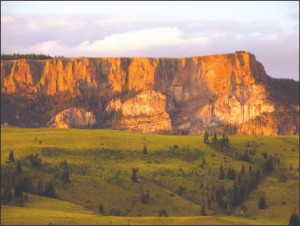A Farmer Far Afield
by John Mattingly
This the second in a series of annual, contrarian views expressed in Farmer Far Afield. The first, A HOUSE IS JUST A HOUSE, provoked an unexpected volume of perturbed responses from folks convinced their home was an “investment.”
In some cases it may be, but nationwide (most particularly in California, Arizona, Nevada and Florida) the housing bubble has burst bigtime, giving me at least a partial reprieve on my contrarian position that a house should be viewed, and valued, as shelter, not as an asset.
I’m now going to take contrarian aim at what I predict will be a College Education Bubble. Despite the efforts of the new administration to encourage higher education for all, I believe the way we become educated, the ways we access knowledge, and what we will need to know to survive and flourish in the future, ain’t being taught at the higher levels.
The four primary reasons for going to college:
1. You will earn more money as a graduate.
2. You will become a more well-rounded person.
3. You will find more doors opening for you.
4. You will acquire valuable tools for life.
It’s no surprise that the data supporting these reasons is gathered and disseminated by institutions of higher learning that have a vested interest in promoting their product.
An alternate set of data points out:
1. A college education is expensive, ranging from a minimum of $70,000 up to $400,000 (for four years of room, board, transportation, clothes, and finally, tuition and books). No question: a college kid has to make more money as a graduate to pay back the real costs of the education plus the opportunity cost of four years of not working. From high-end institutions, the pay-back can take up to 12 years to break even, and with a 50% decline in the stock market, much of the money set aside for college education is simply gone (along with the $10+ trillion and counting that simply “disappeared” with the de-levering of the equities markets.)
2. Over 65% of high school graduates choose a college based on where their friends or sweethearts are going, or the notoriety, or possibilities, of the school’s athletic program, the latter explaining why coaches are paid more than professors, and calls into question what sort of “rounding” a student actually receives.
3. It turns out that the most important variable in the “doors” opened by a college education is not your major or your GPA, but who you meet and make connections with that last long after graduation.
4. Some jobs require qualification, others competence, and the tools needed for the latter category are better acquired through trade schools and apprenticeship than college.
To these, I add this set of considerations:
1. The democratization of information via the internet and all electronic media has eroded the necessity of going to college to get basic information. Online universities are multiplying and growing. A student can be working or interning while simultaneously receiving instruction that leads to qualification in far less than four years.
2. The foundation under a college education, the K-12 system, is policy-driven by school boards, elected from the local community, the theory being that this is a sacred realm of local control. But community members are generally prejudiced by their own education, which (though 20, or more, years old) they nevertheless champion as superior, even though it may bear only a faint resemblance to “what it means to be an educated person” in present time. The school board system often prepares high school graduates for a world that no longer exists.
College then, at best, becomes an expensive and inefficient mechanism for effecting students’ transition to the world as it might really be.
3. Even if a high school education is contemporary in the deepest sense, there are structured “Gap Year Programs,” (GYPs) that provide stimulating internships and jobs for a period of two to three years between high school and college. These programs give students a chance to work in the real economy and get a better sense of what they need to study when they go to college, rather than using college as something of an amusement park in which they take their time taking the various rides.
GYPs are prolific, challenging, cheaper than college, and reduce the “perpetual student” syndrome, now more common as students frequently take six, eight, or sometimes 12 years of college level education before finally getting a job.
4. Given the current economic crisis (which I believe will result in a much smaller U.S. economy shaped by world rather than national forces) the idea has been forwarded that our educational system might benefit from a renewed YCC, Youth Conservation Corps, to take on some of the nation’s infrastructural re-building projects, work on farms, and contribute to public works projects, much the way the CCC, Civilian Conservation Corps, did during the Great Depression.
At the conclusion of high school, a graduate basically has been trained to go to school. Under the YCC idea, a high school graduate would be given a strong incentive, perhaps even a requirement of service similar to a draft, to participate in a rejuvenated YCC for two years and receive modest compensation and a wealth of practical experience.
As our economy returns to the business of “making things” instead of manufacturing “growth” by way of debt, accounting tricks, and outright fraud, perhaps some of the best jobs will be of a physical nature. Tomorrow’s youth need to think of themselves as competing, and working, with Chinese, Indian, and worldwide youth for jobs of the future, and many of those jobs may not begin with a chair, a desk, and a multi-million dollar bonus.
5. Providing one’s offspring with a college education has become a part of a modern, consumer-driven ethic that each generation has an obligation to make it easier, or better, for the next. But if you run this out to its logical conclusion, you eventually get a generation that starts so high on the ladder of life that its members don’t even have to reach for the high-hanging fruit, and they have no idea how far they can fall if the ladder tips over.
There is nothing wrong about letting successive generations experience a coil of stresses that builds vigor. One way to do this is to remove a college education from the “givens.” If a kid really wants a college degree, let him or her pay for it.
6. Finally, to get some perspective on “advancements” in education, we need to remember that all humans now on the planet are descendants of people who, for several million years didn’t even have such a thing as a college to attend, and they survived ice ages, plagues, continental migrations, horrible wars, ethnic and religious cleansing, and numerous stresses under which most of us today (including college graduates) would crumble in a matter of moments.
To a get a contemporary grasp of this perspective, I have only to look back as far as my own grandfather, who had only an eighth grade education, but here is the exam he had to pass:
EIGHTH GRADE FINAL EXAM,
SHAWNEETOWN, ILLINOIS
Grammar (Time, one hour)
1. Give nine rules for the use of capital letters.
2. Name the parts of speech and define those that have no modifications.
3. Define verse, stanza and paragraph
4. What are the principal parts of a verb? Give principal parts of “lie,” “play,” and “run.”
5. Define case; Illustrate each case.
6 What is punctuation? Give rules for principal marks of punctuation.
7 – 10. Write a composition of about 150 words and show therein that you understand the practical use of the rules of grammar.
?
Arithmetic (Time, 1.25 hours)
1. Name and define the Fundamental Rules of Arithmetic.
2. A wagon box is 2 ft. deep, 10 feet long, and 3 ft. wide. How many bushels of wheat will it hold?
3. If a load of wheat weighs 3942 lbs., what is it worth at
50cts/bushel, deducting 1050 lbs. for tare?
4. District No. 33 has a valuation of $35,000. What is the necessary levy to carry on a school seven months at $50 per month, and have $104 for incidentals?
5. Find the cost of 6720 lbs. coal at $6.00 per ton.
6. Find the interest of $512.60 for 8 months and 18 days at 7 percent.
7. What is the cost of 40 boards 12 inches wide and 16 ft. long at $20 per meter?
8. Find bank discount on $300 for 90 days (no grace) at 10 percent.
9. What is the cost of a square farm at $15 per acre, the distance of which is 640 rods?
10. Write a Bank Check, a Promissory Note, and a Receipt.
?
U.S. History (Time, 45 minutes)
1. Give the epochs into which U.S. History is divided.
2. Give an account of the discovery of America by Columbus.
3. Relate the causes and results of the Revolutionary War.
4. Show the territorial growth of the United States.
5. Tell what you can of the history of Illinois.
6. Describe three of the most prominent battles of the Rebellion.
7. Who were the following: Morse, Whitney, Fulton, Bell, Lincoln, Penn, and Howe?
8. Name events connected with the following dates: 1607, 1620, 1800, 1849, 1865.
?
Orthography (Time, one hour)
1. What is meant by the following: Alphabet, phonetic, orthography, etymology, syllabication
2. What are elementary sounds? How classified?
3. What are the following, and give examples of each: Trigraph, subvocals, diphthong, cognate letters,
linguals
4. Give four substitutes for caret ‘u.’
5. Give two rules for spelling words with final ‘e.’ Name two exceptions under each rule.
6. Give two uses of silent letters in spelling. Illustrate each.
7. Define the following prefixes and use in connection with a word: bi, dis, mis, pre, semi, post, non, inter, mono, sup.
8. Mark diacritically and divide into syllables the following, and name the sign that indicates the sound: card, ball, mercy, sir, odd, cell, rise, blood, fare, last.
9. Use the following correctly in sentences: cite, site, sight, fane, fain, feign, vane, vain, vein, raze, raise, rays.
10. Write 10 words frequently mispronounced and indicate pronunciation by use of diacritical marks and by syllabication.
?
Geography (Time, one hour)
1 What is climate? Upon what does climate depend?
2. How do you account for the extremes of climate in Illinois?
3. Of what use are rivers? Of what use is the ocean?
4. Describe the mountains of North America
5. Name and describe the following: Monrovia, Odessa, Denver, Manitoba, Hecla, Yukon, St. Helena, Juan Fernandez, Aspinwall and Orinoco.
6. Name and locate the principal trade centers of the U.S.
7. Name all the republics of Europe and give the capital of each.
8. Why is the Atlantic Coast colder than the Pacific in the same latitude?
9. Describe the process by which the water of the ocean returns to the sources of rivers.
10. Describe the movements of the earth. Give the inclination of the earth.
With “only an eighth grade education” my grandfather was president of the local bank, ran the International Harvester equipment dealership in the area, published the county newspaper, The Gallatin Democrat, and with his wife of 53 years raised three children in an 800-square-foot home that he built himself. His education provided him with all four of the benefits now claimed by today’s college education, if not more.
The take-home test question is: Do today’s college graduates really have the same advantages afforded by my grandfather’s 8th grade education, or is the world changing faster than today’s institutions of higher learning can adapt to, and understand, those changes?
John Mattingly cultivates prose, among other things, and was most recently seen near Creede.


